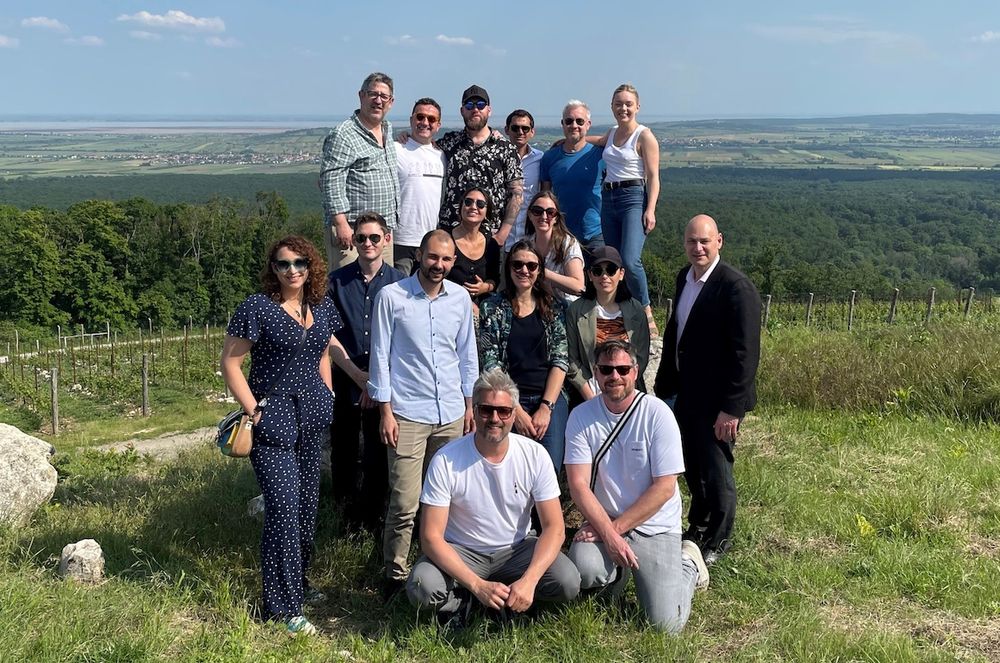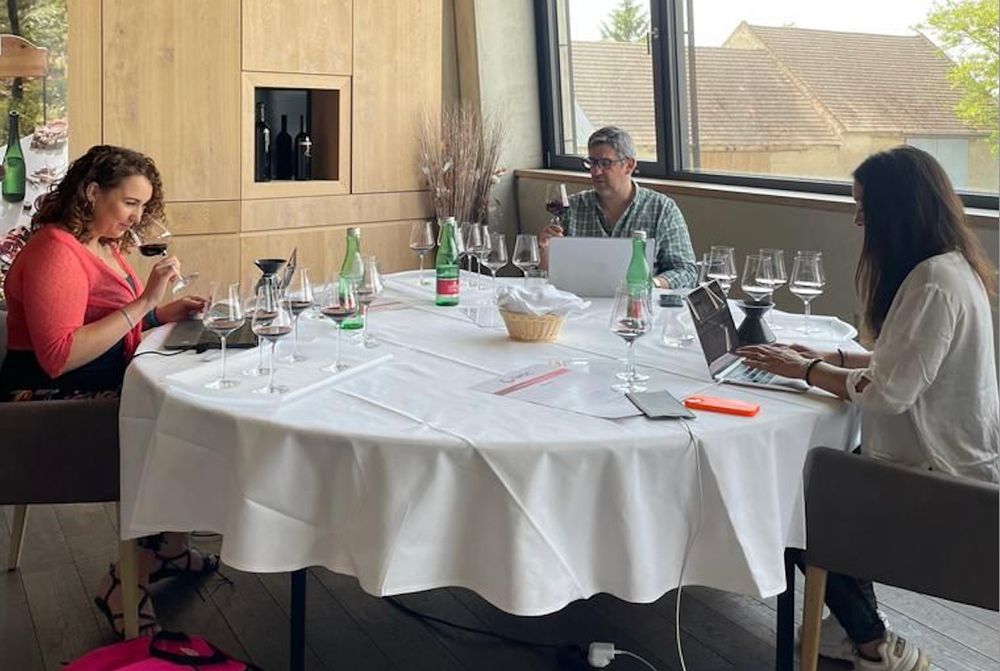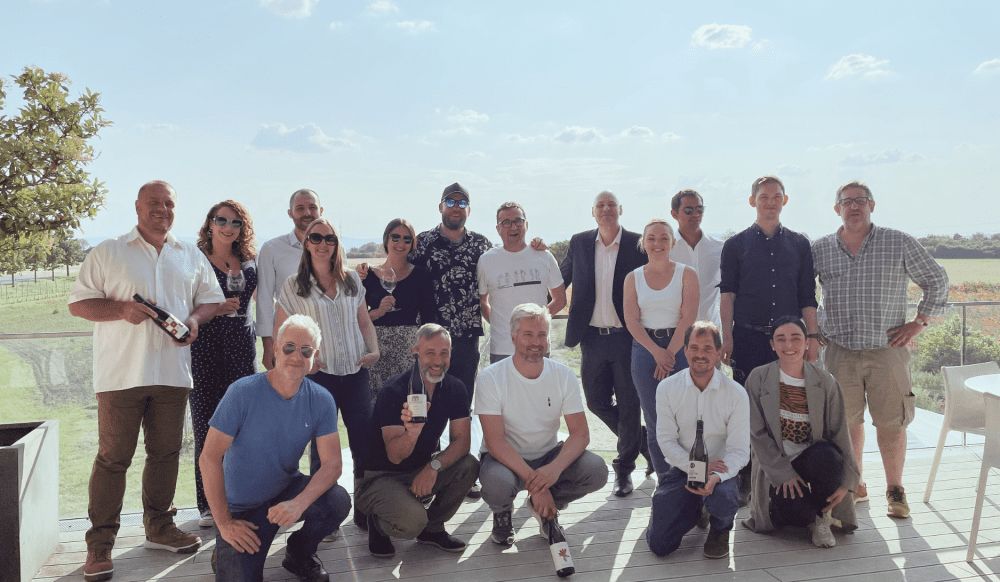You can find all the results for the IWSC 2023 awards at its website here, and analyse the full results from its Austrian judging here.
With its distinctive indigenous, often obscure, grape varieties combined with aheartening preponderance offamily wineries handed down the generations, the rich traditions that exemplify Austria’s wine scene can sometimes appear at odds with the dynamism of those who lead it.
Though domestic consumption has actually been in gentle decline, Austrian wine has maintained a resolute focus on the outside world that has seen exports boom – they reached €231 million in 2022, a 6.4% increase on the previous year, itself a new high – so the decision to invite a team consisting solely of international judges from the IWSC felt in tune with the marketing body’s mission to sell the story of its wine culture to the world.
Beyond the goal of scoring some 450 wines – all assessed blind in exactly the same way they would be in London – the event also offered an opportunity to bring an experiencedteam of 13 experts, selected from different disciplines, closer to those behind that dynamism.A three-day itinerary of visits and tastings complemented the morning judging sessions, the group based at the swish wine-focused Scheiblhofer Resort in Andau, close to Lake Neusiedl.
Team effort

The IWSC’s judging team ready for action in Austria
Personally overseen by the IWSC’s restless chief executive, Christelle Guibert, and co-ordinated by operations guru, Dave Woodward, senior judging committee member Dirceu Vianna Junior MW had the daunting task of overseeing the process, retesting many of the wines (including all gold contenders) and adjudicating in the case of a difference of opinion.
On the judging teams, a stellar selection of wine professionals:
- Wine buyers: Freddy Bulmer, Salvatore Castano, Richard Lewis, Igor Sotric, Marien Rodriguez, Emma Penman and Megan Clarke.
- Retail consultant: Cat Lomax.
- Sommeliers: Matteo Montone MS and Eric Zwiebel MS.
- Wine writers/journalists: Sophia Longhi and David Kermode.
“In terms of judging, nothing changes. The competition is notoriously tough. Judges are mostly prominent buyers and have notoriously high standards,” says Vianna Junior, describing an assessment process whose exacting reputation is now well known.“The judging sessions reaffirmed my opinion that standards are high (and) Austrian wines continue to offer great quality in combination with consistency.”
In all, an impressive 17 wines won gold medals, with 136 silver medals awarded and 229 bronze (see the full list of medal winners here).
Consistency and value

The IWSC’s judging sessions in Austria were also an opportunity for UK wine buyers and professionals to visit and meet local producers
Broadly two thirds of Austria’s 44,728 hectares under vine are white grapes, with its signature variety, Grüner Veltliner, accounting for a whopping 14,548 hectares – a third of all plantings. It was no surprise then, that Grüner excelled in the judging process, accounting for around half of the gold medals, which underlined not only the consistent quality to be found across the board, from dry wines to orange and sweet, but also Grüner’s often under-appreciated ageing ability.
“You would be hard-pressed to find a country that has such a great offering of good value age-worthy dry white wines and we saw a reflection of that,” says Bulmer, The Wine Society’s Austria buyer. “We talk a lot about the importance of consistency and we saw that, for sure.”
Riesling also performed extremely well, with a trio of gold medals, though for Vianna Junior, while the whites shone bright, with a gold also going to a Styrian Sauvignon Blanc, he felt some of the country’s less widely planted varieties could have been better represented: “Austrian white wines are undoubtedly the driving force and the category performed very well, especially Riesling and Gruner Veltliner, as can be expected. The best wines are simply delicious and deserve all the praise they get. However, I would have liked to have seen more diversity in terms of grape varieties.”
Though Austria’s red grapes are less well known, there was a strong performance in terms of quality and consistency, with its most common red grape Zweigelt, planted across 6,129 hectares, notching up a gold, alongside an enchanting example of one of its rare treasures, a St Laurent, a challenging variety accounting for a mere 1.3% of total plantings.
“Red wines performed well. Most people don’t associate Austria with red wine, which is a mistake since a very large proportion of its exports are red wines. Like its whites, the standards are high, and consumers would be well served when pulling a cork of Austrian red,” adds Vianna Junior.
Beyond the judging

The IWSC’s Austrian judging team included UK wine buyers, importers, sommeliers and writers
For us, as judges, the visit presented an invaluable opportunity to combine the ‘day job’ – rigorous assessment of around 65 wines (the IWSC stipulates this maximum, to avoid palate fatigue and ensure all wines are given a fair chance) – with a real sense of immersion into the hinterland from which many of those wines came, meeting as many producers as possible, whilst also being treated to some legendary Austrian hospitality, a cycle ride around Lake Neusiedl and a boat trip.
“Judging ‘in situ’ gives an opportunity for producers to interact and exchange knowledge with the judges and for them it is a great opportunity to cement their knowledge of a particular region and, as buyers, discover new opportunities,” says Vianna Junior, who has led a number of the IWSC’s location judging missions.
Megan Clarke, senior buyer at Ellis Wines echoed the view that the trip offered a new dimension when it came to wine judging: “I think, on the whole, Austria is still a relatively unknown country to a lot of people. It’s somewhere they can really enjoy exploring, so that’s where this competition can be really useful to get the wines out to the market and have people learning more about the region.”

Judging in situ gives UK professionals the chance to experience Austria as well as judge its wines
For Cat Lomax, a former senior wine buyer at Majestic and Marks & Spencer, the process also underlined the sheer untapped potential for Austria’s wines: “From my background in large scale retail, I would say that the average UK consumer still isn’t really very aware of Austria, so it’s an area of huge potential, especially when you think of the white wines that sell really well, which are aromatic, crisp and fresh, with a sort of Sauvignon profile, you can see there’s a really natural fit for Grüner Veltliner.
“A hallmark of these wines is that even where the wines are very dense and concentrated in terms of flavour, you still want to return and have a second glass and that’s a very strong position, commercially,” she added, with an inadvertent hint at how the evenings might have been enjoyed.
So, for the final word, having completed the first ‘in situ’ Austrian judging, what advice would Vianna Junior give its winemakers?
“The country boasts distinct,diverse and wonderful terroir. I would encourage winemakers to let terroir manifest itself by using winemaking techniques that are gentle and be mindful when using oak to allow the sense of place to be in the forefront,” he said.
- To find out more about the IWSC and its judging process go to its website here.
- You can read other articles based on IWSC’s judging panels around the world on The Buyer here.









































